By Melissa Hekkers
A thought provoking discussion between artistic directors working with circus unfolded at the Helsingborg Arena this morning, a kind of open-ended sharing space that revolved around the theme of composition/dramaturgy and how time and space is managed in non-verbal performing arts, and more specifically circus.
The session was moderated by Bengt Andersson, Artistic Director and Member of the Board of ASSITEJ Sweden, who expressed a dear admiration for traditional circus. It’s by talking through the stages of any storytelling – the beginning, the middle and the end – that a series of poignant remarks and observations were put forward by three professionals working in the field and who also shed light on contemporary circus practices. The three professionals included Viktoria Dalborg, Circus Director at Kompani Giraff, Magali Bancel, Circus Director, leader of development for circus at Riksteatern and Rune Vadstrøm Andersen, Artistic Director, Dynamo Workspace for circus and performing arts.
Here are the 12 takeaways from their discussion:
#1 Each circus creation has its own processes; for me, the beginning is very important because you need to catch the attention of the audience and you need to build a story that the audience would like to take part in. Personally, I have quite a clear idea of the scenes before I start rehearsing, I know how many scenes I will be working on, I know what’s going to be in each scene, what we’re going to tell with each scene… and when we start to work on the scenes I also invite circus performers to create with me, working on the theme of each scene. -Viktoria Dalborg
#2 There is this thing about circuses that for me is very important which is the innovation and technicity of circus, which for me is also what defines circus as opposed to other art forms because you work with equipment. Even if your body is your equipment, you still work with that equipment and this is already, somehow, part of the dramaturgy of what you’re going to do/create. -Magali Bancel
“...circus is everywhere, it’s like writing in space and the trajectory of your body in space, it’s the same as sound for musicians and colours for painters“
Magali Bancel
#3 In circus you compose in volume, because, for example, dance happens on the floor (on the stage), but circus is everywhere, it’s like writing in space and the trajectory of your body in space, it’s the same as sound for musicians and colours for painters. – Magali Bancel
#4 As an audience in a circus you already have some kind of expectation, that somebody is going to perform for you. So in a way, this has already been established when audience enters the space. – Magali Bancel
#5 Nowadays, I see a lot of (circus) performances where artists themselves are not really acting on stage, they are themselves on stage, but the show is more about building a universe, visual or audio, around a things. There also a tendency for (circus) shows to become more and more political; nowadays you see (circus) shows about environmental issues, gender issues and so on but these messages are incorporated more and more into the setting, the universe, the surrounding rather than being acted out on stage. -Rune Vadstrøm Andersen
#6 I find that the first scene is always the key scene, and it’s always the scene that I spend the most time solving. – Viktoria Dalborg
#7 Very often, in circus, there is a lack of a fourth wall and very often you will see direct eye contact between performers on stage and the audience; it’s part of the performance to address the audience verbally or physically. In circus, there is always some kind of communication with the audience. – Rune Vadstrøm Andersen
“I find that the first scene is always the key scene, and it’s always the scene that I spend the most time solving”
Viktoria Dalborg
#8 Circus in itself tells stories about life and death, space and gravity and your relation to fear and culture; there’s so much of this in just the act of circus, so in a way, just doing circus is already saying something and that’s why I think, even if traditional circus didn’t want to have a theme or even if performers weren’t speaking, they were actually already talking to you, just by having their body in the space. – Magali Bancel
#9 It’s important to have a strong middle (a peak), because you want to bring your audience to the next part of the show with you. – Viktoria Dalborg
#10 I often look at the structure of traditional circus and if you give a strong beginning, which is not your best but strong enough to make a statement, and then you do your tricks, and you finish with your best trick, that’s a classic way of telling your story but in a way, it’s also a question of reason, you can also choose to start with something intimate and build on that until you reach the end. – Magali Bancel
#11 An almost classic way of creating modern circus revolves around devising methods, it’s very rare, these days, to have circus shows that have a written script from the beginning. – Rune Vadstrøm Andersen
#12 We do have some sort of an idea of where we want to take something or what the message is going to be, but then we start developing scenes around different subjects and once you have your vocabulary you start looking at what the energy of these scenes are. – Rune Vadstrøm Andersen
Melissa Hekkers is a freelance journalist and author. Her most recent book, Amir’s Blue Elephant, is a creative non-fiction based on her experiences working with refugees, in Lesvos, Greece. In 2018, she launched My Cyprus Mandala, an interactive educational book series on the natural and cultural heritage of Cyprus. In 2007, she published her first children’s book ‘Crocodile’, which won the Cyprus State Illustration Award. Her second children’s book Flying across Red Skies (2012) was nominated for the Cyprus State Literary award. Her third children’s book ‘Pupa’ (2014) was adapted as a theatre play in 2019.



